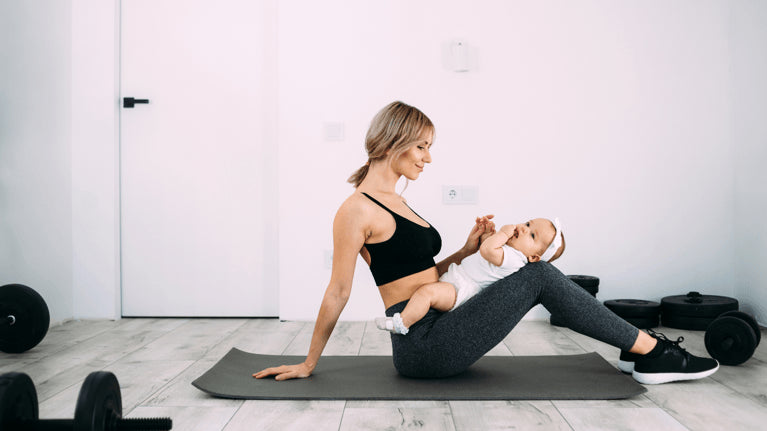My Cart(0)
Nurturing Strength: A Guide to Postpartum Core Exercises and Recovery

Introduction
The journey of pregnancy and childbirth is a remarkable and transformative experience for women. As you welcome your bundle of joy into the world, it's essential to embark on a thoughtful and gradual path toward postpartum recovery. A crucial aspect of this recovery is rebuilding core strength, which can be instrumental in regaining overall health and well-being. In this blog post, we'll delve into expert advice from reputable sources to guide you through postpartum core exercises and the holistic approach to bouncing back after pregnancy.
Understanding the Core
Before diving into specific exercises, it's essential to understand what the core comprises. The core isn't just about achieving a flat stomach; it encompasses a complex system of muscles, including the rectus abdominis, transverse abdominis, pelvic floor, and obliques. BabyCenter highlights the significance of these muscles in providing stability, supporting the spine, and facilitating everyday movements.
Gradual Reintroduction of Exercise
Outside Online stresses the importance of a gradual approach to postpartum exercise. While the desire to regain pre-pregnancy fitness levels may be strong, it's crucial to respect the body's need for recovery. Starting with gentle activities like walking and gradually progressing to more targeted exercises is key. This gradual reintroduction reduces the risk of injury and allows your body to adapt to the physical demands of exercise after childbirth.
Postpartum Core Exercises
BabyCenter provides a list of postpartum core exercises designed to strengthen and tone the muscles that may have been stretched or weakened during pregnancy and childbirth. These exercises include pelvic tilts, Kegels, heel slides, and abdominal contractions. Incorporating these into your routine, with the approval of your healthcare provider, can contribute to the gradual rebuilding of core strength.
Pelvic Floor Exercises
Hopkins Medicine emphasizes the importance of pelvic floor exercises in postpartum recovery. The pelvic floor muscles play a crucial role in supporting the pelvic organs and maintaining bladder and bowel control. Simple exercises like Kegels can aid in the restoration of pelvic floor strength. Consulting with a pelvic floor physical therapist can provide personalized guidance and exercises tailored to your specific needs.
The Role of Nutrition
While exercise is a vital component of postpartum recovery, nutrition plays an equally crucial role. Hopkins Medicine advises that a balanced and nutrient-rich diet supports healing and provides the energy needed for daily activities and exercise. Adequate hydration is also essential, especially if you're breastfeeding. Consult with a healthcare professional or a registered dietitian to create a nutrition plan that aligns with your postpartum goals.
Listening to Your Body
Every woman's postpartum journey is unique, and it's essential to listen to your body throughout the recovery process. Outside Online encourages paying attention to how your body responds to exercise and adjusting your routine accordingly. If an exercise causes discomfort or pain, it's crucial to modify or omit it from your routine. A mindful and intuitive approach to exercise fosters a healthy and sustainable postpartum recovery.
Rest and Recovery
Hopkins Medicine emphasizes the significance of rest and recovery in the postpartum period. Adequate sleep and restorative practices, such as gentle stretching and relaxation techniques, contribute to overall well-being. Striking a balance between activity and rest ensures that your body has the time and resources it needs to heal and regain strength.

Conclusion
Navigating postpartum recovery is a personal and transformative journey. Incorporating core exercises, understanding the importance of a gradual approach, and focusing on overall well-being can contribute to a strong and resilient postpartum body. Remember, there is no one-size-fits-all approach, and it's crucial to consult with healthcare professionals to create a tailored plan that aligns with your specific needs and goals. As you embark on this journey, embrace the gradual progress, celebrate small victories, and prioritize self-care. Your postpartum body is a testament to the incredible journey of motherhood, and by nurturing its strength, you're not only investing in your well-being but also in the joyous moments that lie ahead.unsubscribe at any time without costs.










